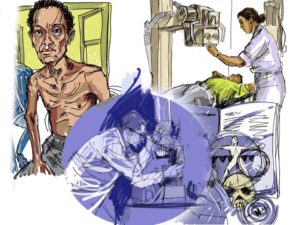Rumors of commercial quantum computing systems have been coming hot and heavy these past few years but there are still a number of issues to work out in the technology. For example, researchers at the Moscow Institute Of Physics And Technology have begun using silicon carbine to create a system to release single photons in ambient i.e. room temperature conditions. To maintain security quantum computers need to output quantum bits – essentially single photons. This currently requires a supercooled material that proves to be unworkable in the real world. From the release:
Photons — the quanta of light — are the best carriers for quantum bits. It is important to emphasize that only single photons can be used, otherwise an eavesdropper might intercept one of the transmitted photons and thus get a copy of the message. The principle of single-photon generation is quite simple: An excited quantum system can relax into the ground state by emitting exactly one photon. From an engineering standpoint, one needs a real-world physical system that reliably generates single photons under ambient conditions. However, such a system is not easy to find. For example, quantum dots could be a good option, but they only work well when cooled below −200 degrees Celsius, while the newly emerged two-dimensional materials, such as graphene, are simply unable to generate single-photons at a high repetition rate under electrical excitation.
Researchers used silicon carbide in early LEDs and has been used to create electroluminescent electronics in the past. This new system will allow manufacturers to place silicon carbide emitters right on the quantum computer chips, a massive improvement over the complex systems used today.








